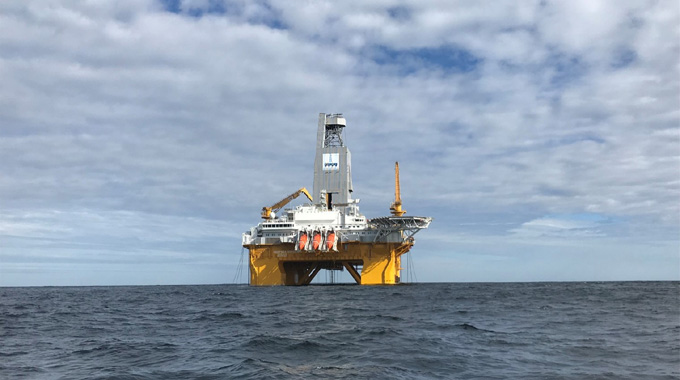
Well 6507/2-6 was drilled by the Deepsea Nordkapp drilling facility. Photo: Odfjell Drilling
Aker BP, operator of production licence 261, has concluded the drilling of wildcat well 6507/2-6.
The well was drilled about 7 kilometres west of the Skarv field in the Norwegian Sea and 230 kilometres west of Sandnessjøen.
The primary exploration target for the well was to prove petroleum in Middle Jurassic reservoir rocks (the Garn Formation). The secondary exploration target was to prove petroleum in reservoir rocks in the Middle and Lower Jurassic (Ile and Tilje Formations) and in reservoir rocks in the Upper Cretaceous (Lysing Formation).
In the primary exploration target in the Garn Formation, well 6507/2-6 encountered gas-bearing sandstone rocks totalling about 50 metres, with poor reservoir quality. The petroleum/water contact was not encountered.
In the secondary exploration target in the Jurassic, well 6507/2-6 encountered a gas column of about 44 metres in the Ile Formation, with sandstone layers totalling about 33 metres with poor reservoir quality.
The well also encountered a gas column of about 109 metres in the Tilje Formation, with sandstone layers totalling about 62 metres with poor to moderate reservoir quality. The petroleum/water contacts were not encountered in any of the formations.
Preliminary estimates indicate the size of the discovery in the Jurassic is between 3.6 and 10.8 million standard cubic metres (Sm3) of recoverable oil equivalent.
In the secondary exploration target in the Cretaceous, well 6507/2-6 encountered a gas column of 4 metres and an oil column of about 3 metres in the Lysing Formation, which consists of sandstone layers totalling about 40 metres with moderate to good reservoir quality.
Preliminary estimates place the size of the discovery in the Cretaceous between 1.2 and 1.8 million standard cubic metres (Sm3) of recoverable oil equivalent.
Hydrocarbon-bearing sandstone layers totalling about 12 metres were also encountered in the Lange Formation, with poor to moderate reservoir quality.
The licensees will consider further delineation of the discovery in relation to potential development.
The well was not formation-tested, but extensive data acquisition and sampling have been carried out.
This is the first exploration well in production licence 261.
Well 6507/2-6 was drilled to a vertical depth of 4904 metres below sea level, and was terminated in the Åre Formation in the Lower Jurassic.
Water depth at the site is 336 metres. The well will now be temporarily plugged and abandoned.
Well 6507/2-6 was drilled by the Deepsea Nordkapp drilling facility, which will now drill wildcat well 6507/3-15 in production licence 941 in the Norwegian Sea, where Aker BP ASA is the operator.
KeyFacts Energy Industry Directory: Aker bp Norway country profile
 KEYFACT Energy
KEYFACT Energy